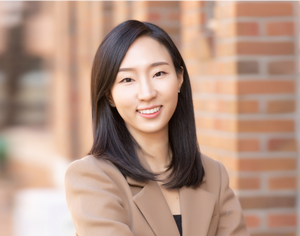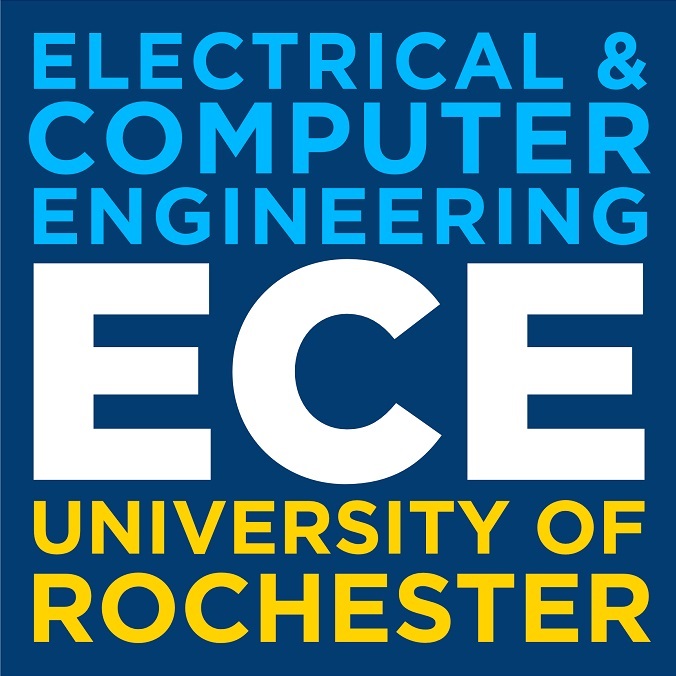ECE Seminar Lecture Series
Nanophotonic Interfaces to Control Plasmons and Spins for Next-Generation Quantum Technologies
Laura Kim, Assistant Professor, Department of Materials Science and Engineering at UCLA
Friday, February 23, 2024
Noon–1 p.m.
Abstract: Light-matter interactions mediated by photonic quasiparticles play a crucial role in unlocking phenomena that are not accessible with free-space photons and providing efficient interfaces for quant um systems. In the first part of the presentation, I will present the first experimental demonstration of a mid-infrared light-emitting mechanism originating from an ultrafast coupling of optically excited carriers into hot plasmon excitations in graphene. Such excitations show gate-tunable, non-Planckian emission characteristics due to the atom-level confinement of the electromagnetic states. These findings for plasmon emission in photo-inverted graphene open a new path for the exploration of mid-infrared emission processes, and this mechanism can potentially be exploited for both far-field and near-field applications for strong optical field generation. In the second part of the presentation, I will present a resonant metasurface that mediates efficient spin-photon interactions and enables a new type of quantum imaging hardware. This quantum metasurface containing nitrogen-vacancy (NV) spin ensembles coherently encodes information about the local magnetic field on spin-dependent phase and amplitude changes of near-telecom light. The central challenge with NV sensing remains in suboptimal optical readout due to the inefficient spin-photon interface, limiting its achievable sensitivity. In this presentation, I will discuss that nanophotonic strategies provide opportunities to achieve near-unity optical spin readout fidelity for absorption-based readout via resonantly enhanced spin-optic coupling. This resonant surface is designed to readily couple with external radiation and allow shot-noise-limited sensing with a standard camera, eliminating the need of single-photon detectors. This quantum optical imaging system paves the way for a new type of quantum micro(nano)scopy. The projected performance makes the studied quantum imaging metasurface appealing for the most demanding applications such as imaging through scattering tissues and spatially resolved chemical NMR detection.
um systems. In the first part of the presentation, I will present the first experimental demonstration of a mid-infrared light-emitting mechanism originating from an ultrafast coupling of optically excited carriers into hot plasmon excitations in graphene. Such excitations show gate-tunable, non-Planckian emission characteristics due to the atom-level confinement of the electromagnetic states. These findings for plasmon emission in photo-inverted graphene open a new path for the exploration of mid-infrared emission processes, and this mechanism can potentially be exploited for both far-field and near-field applications for strong optical field generation. In the second part of the presentation, I will present a resonant metasurface that mediates efficient spin-photon interactions and enables a new type of quantum imaging hardware. This quantum metasurface containing nitrogen-vacancy (NV) spin ensembles coherently encodes information about the local magnetic field on spin-dependent phase and amplitude changes of near-telecom light. The central challenge with NV sensing remains in suboptimal optical readout due to the inefficient spin-photon interface, limiting its achievable sensitivity. In this presentation, I will discuss that nanophotonic strategies provide opportunities to achieve near-unity optical spin readout fidelity for absorption-based readout via resonantly enhanced spin-optic coupling. This resonant surface is designed to readily couple with external radiation and allow shot-noise-limited sensing with a standard camera, eliminating the need of single-photon detectors. This quantum optical imaging system paves the way for a new type of quantum micro(nano)scopy. The projected performance makes the studied quantum imaging metasurface appealing for the most demanding applications such as imaging through scattering tissues and spatially resolved chemical NMR detection.
Bio: Laura Kim is an assistant professor in the Department of Materials Science and Engineering at UCLA. Prior to joining UCLA, she completed her IC Postdoctoral Fellowship in the Quantum Photonics Laboratory at the Massachusetts Institute of Technology. She received her B.S. and Ph.D. degrees from the California Institute of Technology. She was named a 2020 EECS Rising Star and a recipient of the IC Postdoctoral Fellowship, Gary Malouf Foundation Award, and National Science Foundation Graduate Research Fellowship. She serves on the Early Career Editorial Advisory Board of Applied Physics Letters. Her current research interests include enhancing photonic-quasiparticle-driven light-matter interactions and developing nanoscale quantum sensing technologies.
Refreshments will be provided.

